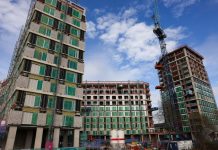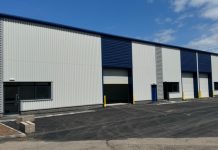Simon Rickards, Partner, South East Office Investment at Knight Frank, rounds up the year and looks forward to what 2017 holds for the South East office market:
South East office Investment volumes look set to hit close to £3bn, well ahead of the long term average, as investors continue to favour the sector.
After a record breaking 2015, the year began slowly, with AEW’s acquisition of the Bath Road frontage in Slough from Segro dominating the first quarter. The second quarter was relatively muted, ahead of the Referendum, but the second half of the year has seen volumes steadily build as Brexit fears subside. Once again, a few very large deals dominate the headlines, with Mapletree’s acquisition of Green Park, Reading for £563M and Spelthorne Council’s purchase of the BP headquarters in Sunbury for £340M accounting for one third of total volumes between them.
Transactions such as these reflect the market’s most prolific buyers in 2016, with overseas investors and Councils taking advantage of a relative pause for breath from the UK funds, and accounting for 74% of volumes between them.
Middle Eastern investors have been particularly prolific, buying ten year income where they can secure cheap debt in a politically safe haven. The falling value of sterling further makes the UK attractive to these parties. Prime yields for income stand at 5.25% but such is the scarcity of deliverable product and depth of demand that we believe this will come under downward pressure over the next 12 months.
Councils have been a major buyer of South East office property this year, accounting for 19% of volumes. As more and more councils produce a workable strategy, we expect them to become increasingly aggressive buyers for mid-long term income assets, unless Central Government tighten their policies, which has been suggested as a possibility in recent weeks.
The third major buyer this year has been residential developers, as they take advantage of Permitted Development rights to re-develop older offices into residential. A good example is Croydon, with c.2 m sq ft of 1970’s offices being turned into residential. In doing so, the town’s over-supply of offices has been almost eradicated. Factor in the recent investment into the town’s infrastructure, and it is a very different place than it was a few years ago, with rents rising commensurately.
Rents in most South East markets have risen steadily over the last few years, driven principally by a lack of supply, giving investors a very real chance of a significant uplift at review. However, there is a concern that Permitted Development rights could reduce supply in some markets to an unhealthy level.
St Albans, for example, has seen a number of major office buildings turn into residential this year. As the Grade A vacancy rate in the town is eroded to near 0%, rents have risen dramatically, with £34.50psf achieved in the town centre. This will lead to businesses having to consider other locations for growth and new offices. The lack of viable sites for office development is only likely to constrain supply in the mid-term. Time to build?
As the Elizabeth Line gets ever closer, more and more towns enjoy a facelift and vacancy rates in the markets hit their lowest level since 2001, prospects for the region appear positive. Whilst returns in general for 2017 are expected to be relatively low, it is markets with healthy income returns, such as the South East, that should out-perform.
Looking forward, we expect the glut of overseas investors to continue to want to invest in South East offices, either in the form of income buyers from the Middle East, or Opportunity Funds from the US, with plenty of money still to invest from recent raisings. Current policies suggest both Councils and Permitted Development buyers will continue to aggressively invest in the right opportunities.
We expect the institutional market to invest more in 2017 than they have during the course of 2016, albeit the major retail funds are expected to continue to sit on large cash buffers for the early part of the year, given the challenges they faced over the Summer. With numerous different types of investor looking at the South East office market, it is likely to be a lack of deliverable stock that may hold back volumes next year, as opposed to any lack of buyer demand.























